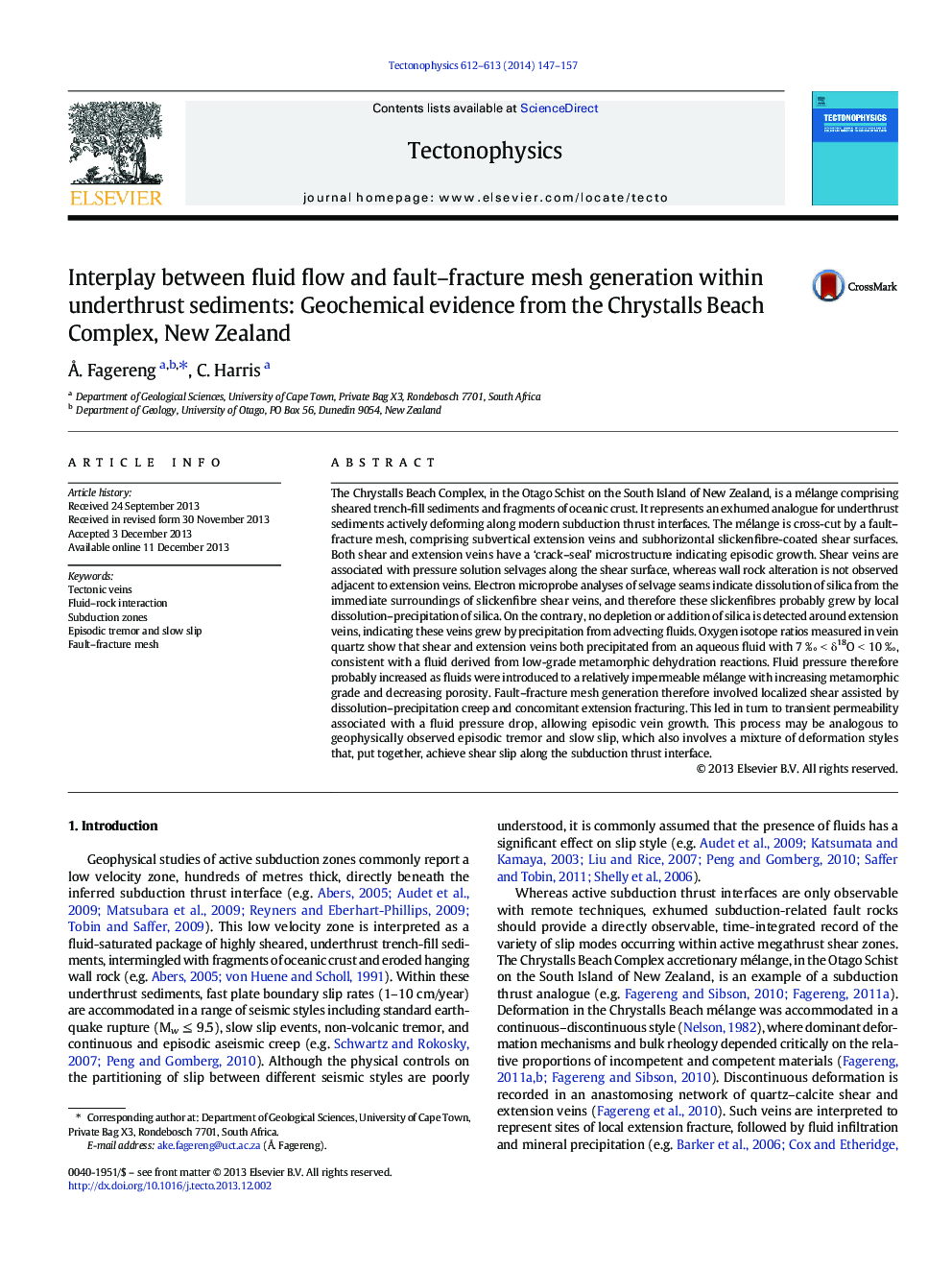| کد مقاله | کد نشریه | سال انتشار | مقاله انگلیسی | نسخه تمام متن |
|---|---|---|---|---|
| 4692085 | 1636775 | 2014 | 11 صفحه PDF | دانلود رایگان |
عنوان انگلیسی مقاله ISI
Interplay between fluid flow and fault-fracture mesh generation within underthrust sediments: Geochemical evidence from the Chrystalls Beach Complex, New Zealand
دانلود مقاله + سفارش ترجمه
دانلود مقاله ISI انگلیسی
رایگان برای ایرانیان
موضوعات مرتبط
مهندسی و علوم پایه
علوم زمین و سیارات
فرآیندهای سطح زمین
پیش نمایش صفحه اول مقاله

چکیده انگلیسی
The Chrystalls Beach Complex, in the Otago Schist on the South Island of New Zealand, is a mélange comprising sheared trench-fill sediments and fragments of oceanic crust. It represents an exhumed analogue for underthrust sediments actively deforming along modern subduction thrust interfaces. The mélange is cross-cut by a fault-fracture mesh, comprising subvertical extension veins and subhorizontal slickenfibre-coated shear surfaces. Both shear and extension veins have a 'crack-seal' microstructure indicating episodic growth. Shear veins are associated with pressure solution selvages along the shear surface, whereas wall rock alteration is not observed adjacent to extension veins. Electron microprobe analyses of selvage seams indicate dissolution of silica from the immediate surroundings of slickenfibre shear veins, and therefore these slickenfibres probably grew by local dissolution-precipitation of silica. On the contrary, no depletion or addition of silica is detected around extension veins, indicating these veins grew by precipitation from advecting fluids. Oxygen isotope ratios measured in vein quartz show that shear and extension veins both precipitated from an aqueous fluid with 7 %° < δ18O < 10 %°, consistent with a fluid derived from low-grade metamorphic dehydration reactions. Fluid pressure therefore probably increased as fluids were introduced to a relatively impermeable mélange with increasing metamorphic grade and decreasing porosity. Fault-fracture mesh generation therefore involved localized shear assisted by dissolution-precipitation creep and concomitant extension fracturing. This led in turn to transient permeability associated with a fluid pressure drop, allowing episodic vein growth. This process may be analogous to geophysically observed episodic tremor and slow slip, which also involves a mixture of deformation styles that, put together, achieve shear slip along the subduction thrust interface.
ناشر
Database: Elsevier - ScienceDirect (ساینس دایرکت)
Journal: Tectonophysics - Volumes 612â613, 4 February 2014, Pages 147-157
Journal: Tectonophysics - Volumes 612â613, 4 February 2014, Pages 147-157
نویسندگان
Ã
. Fagereng, C. Harris,